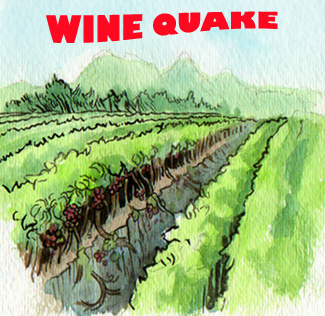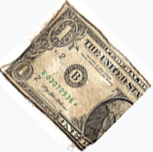

Despite the positive spin provided in the State of the Industry report, there are growing signs that the U.S. wine industry has some emerging fissures.
State of the Industry: Myth Amid Optimism
by
Dan Berger
February 11, 2008
 rom the optimism I heard at the recent Unified Wine and Grape Symposium held in Sacramento, CA in late January, I might have thought the California wine industry was out dancing in the streets. But if you looked at the crucial Wednesday morning State of the Industry session through an electron microscope, you might have a radically differing opinion: that the American wine industry is in a sad state.
rom the optimism I heard at the recent Unified Wine and Grape Symposium held in Sacramento, CA in late January, I might have thought the California wine industry was out dancing in the streets. But if you looked at the crucial Wednesday morning State of the Industry session through an electron microscope, you might have a radically differing opinion: that the American wine industry is in a sad state.
While all the signs were there that a major implosion is imminent, the pundits and the analysts seem curiously, blithely unaware that the skies are cloudy indeed.
Some of the signs came from what speakers at a significant opening-day symposium didn’t say, and those omissions were verified by casual chats I had with key marketing people (none of whom wish to be named for obvious reasons). The only question I can’t answer is this: Is the health of the U.S. wine industry in serious condition or ought it to be reassessed as in critical condition?
To be sure, the hall at the Hyatt Regency Ballroom was filled nearly full with optimistic faces last Wednesday, and a lot of what was said indicated positive trends in the U.S. wine game. (The operative word here is 'indicated'.)
 Ted Baseler, president of highly successful Chateau. Ste. Michelle, pointed to the fact that nationwide sales of Riesling were up 24 percent last year, Pinot Noir sales rose 27 percent and Pinot Gris was up 15 percent. And sales of all Washington wine rose 22.2 percent. Moreover, sales of Australian wine were up only a small amount after a decade of double-digit increases.
Ted Baseler, president of highly successful Chateau. Ste. Michelle, pointed to the fact that nationwide sales of Riesling were up 24 percent last year, Pinot Noir sales rose 27 percent and Pinot Gris was up 15 percent. And sales of all Washington wine rose 22.2 percent. Moreover, sales of Australian wine were up only a small amount after a decade of double-digit increases.
Oh, there was one small negative. Sales of New Zealand wines rose 37 percent and sales of Spanish wines were up 20 percent but U.S. wine sales were rising; and wasn’t that all good news?
Then came Josh Greene from Wine & Spirits Magazine, to speak of the top brands in U.S. restaurants. After a peak in 1994 when Chardonnay led U.S. restaurant wine sales (more than a third of all wine sold), that grape has declined every year since - but that’s okay since it only means that the white wine category is now more diverse, with restaurant goers now happy with a wider selection of wines.
Good news? Well, looking at the numbers you’re not quite sure, since 30 percent of all restaurant wine sales are evenly divided between French and Italian wine.
31 percent of all wine sold in the United States last year was imported wine - an all-time record. In 1986-87, imports reached nearly 1 bottle in 4, and if the current trend continues, it’ll soon be 1 bottle in 3.
That’s not insignificant. Then Nat DiBuduo, president of Allied Grape Growers, displayed a plethora of charts showing where various varieties were growing, and that quality was up across the board for the last few years.
And Glenn Proctor of The Ciatti Company, the world’s largest bulk wine brokerage, affirmed that business was good. (Of course, if Ciatti has a lot of wine to sell, then business would be good. But doesn’t that mean that a lot of wine is selling in bulk, which is a secondary market for some growers? Wouldn’t that wine be worth more if sold to a prime market, direct to consumers without going through the bulk market?)
And last, but certainly not least, came the man we all love to hear, the estimable Jon Fredrickson, who gave a glowing report on the success of some 30 brands whose sales were all up last year. Fredrickson is a skilled professional, and his reports always contain important data about how California is doing. And one fact he delivered was the worst news of all: that 31 percent of all wine sold in the United States last year was imported wine. This, in case you aren’t aware of it, is an all-time record. In 1986-87, imports reached nearly 1 bottle in 4, and if the current trend continues, it’ll soon be 1 bottle in 3.
You’d Think Pollyanna Was In Charge Of The Wine Industry
Still, optimism reigned: this conference was expanded a day into a four-day event; a record 11,000+ attended. Exhibits at the adjacent trade show hall also rose 5 percent to 524 this year - and at least 100 trade suppliers had to be turned away because of a lack of space at the huge Sacramento Convention Center.The reports at the primary session included some news worth looking at. DiBuduo said that over the last decade, some 125,000 acres of wine grapes were removed from California’s Central Valley vineyards. He added that total Central Valley acreage now represents just over 50 percent of the state’s total wine grape acreage.
But is this a good thing? He suggested that the time may be very near when new Central Valley acreage should be planted – but, he cautioned, only for those with solid winery contracts. The key to why is simply the consolidation in the wine industry. With Gallo, Constellation, Diageo, and Fosters now controlling a larger share of all wine production and sales than ever before, the consumers’ options have shrunk. The majors now call the shots in ways they didn’t until just recently.
DiBuduo pointed out that 79 percent of all wine sales were in bottles selling for $10 and less. Does this sound like nearly half of all grape acreage in California is planted in coastal regions, which are more costly to farm?
You can do the math, but if 55 percent of the acreage is located in the Central Valley and 80 percent of the wine is selling for less than $10 a bottle, and still imports are rising steadily, what does this say about the consumer’s attitude toward domestic wine?
DiBuduo admitted that the state’s sliding share of U.S. wine sales is a problem, and then he unaccountably said, “I think the pendulum is swinging back, and wineries now want our grapes.”
The Aussie Attack and How U.S. Exports Backfire
Were that true, how is it possible that not a single word was heard from anyone about the new Regional Heroes campaign that the Australian government has launched to boost sales in the United States. A week before this conference, I met with Paul Henry, Wine Australia’s general manager for market development,”The Aussies have it right. We have to recognize our smaller regions. If we don’t stop [expletive] around with the ‘California’ designation and prove our $10 wines have value added by using smaller appellations on them, we will lose all those millennials.
who laid out a carefully designed plan to kick up Australia’s position in the U.S. market, backed by Aussie government funding. Moreover, an Internet search revealed that in 2006 the United States spent $2 million on research intended to improve wine quality. Australia spent $25.3 million.
One wine marketer told me, “The Aussies have it right. We have to recognize our smaller regions. If we don’t stop [expletive] around with the ‘California’ designation and prove our $10 wines have value added by using smaller appellations on them, we will lose all those millennials. They are getting pretty smart about this, you know.”
Fredrickson, publisher of the respected Gomberg Fredrickson Report, showed graphs and tables proving










 READER FEEDBACK: To post your comments on this story,
READER FEEDBACK: To post your comments on this story,




